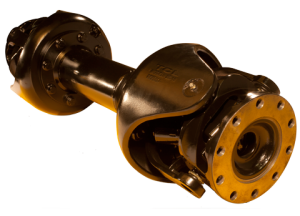In the contemporary landscape of business operations, sustainability and energy efficiency are not just environmental responsibilities but also strategic economic advantages. Hence, we shall be discussing reduce carbon footprint coupling, in this blog.
Energy coupling represents a pivotal innovation in this domain, offering businesses the opportunity to significantly reduce operational costs while advancing their sustainability goals.
This article delves into the concept of energy coupling and elucidates its utility and application in a B2B context.
 Understanding Energy Coupling
Understanding Energy Coupling
Energy coupling is akin to a synergistic approach to energy management within commercial properties. It involves the integration of disparate energy systems and technologies to enhance efficiency, reduce waste, and optimize consumption patterns.
By employing smart technology and advanced systems design, energy coupling facilitates a more coherent and efficient use of resources, akin to creating a collaborative network of energy utilization within a facility.
Strategic Benefits for Businesses
Cost Reduction: Energy coupling or reduce carbon footprint coupling, significantly diminishes reliance on traditional energy grids, cutting down operational expenses. By streamlining energy use, businesses can achieve substantial savings, reallocating resources towards growth and innovation.
Carbon Footprint Minimization: Implementing reduces power consumption coupling directly contributes to reducing a business’s carbon emissions. This not only aids in compliance with increasing regulatory demands for sustainability but also enhances brand reputation among eco-conscious consumers and partners.
Operational Resilience: Energy independence, fostered through energy coupling, equips businesses with greater stability against energy price fluctuations and supply disruptions. This resilience is invaluable in maintaining consistent operations in an ever-volatile market landscape.
Let us see further on reduce carbon footprint coupling:
Implementation Strategies for Industry Buyers
Comprehensive Energy Audit: Begin with a detailed assessment of your current energy systems and consumption patterns. This audit will identify opportunities for integrating coupling technologies and pinpoint areas of inefficiency.
Invest in Smart Technologies: Upgrade to smart energy management systems that can dynamically adjust and optimize energy distribution based on real-time demand and supply conditions. This includes smart meters, automated control systems, and IoT-enabled devices.
Leverage Renewable Energy: Incorporate renewable energy sources, such as solar or wind power, into your energy mix. These sources are ideal for coupling with existing energy systems, further reducing reliance on non-renewable energy and operational costs.
Engage with Energy Specialists: Partner with energy solution providers who specialize in energy coupling. Their expertise will guide the design and implementation of a tailored solution that aligns with your business’s specific needs and objectives.
Conclusion
- Reduce carbon footprint coupling or energy coupling is not merely an environmental imperative but a strategic business decision that can yield significant financial and operational benefits.
- By adopting an integrated approach to energy management, industry buyers position their businesses for greater efficiency, resilience, and sustainability.
- The path towards a greener, more cost-effective operation is clear, and energy coupling is a key milestone in this journey.
- Embracing this innovative approach can transform the energy landscape of your business, setting a benchmark for the future of industry practices.
For more, get in touch with Thompson Couplings.

Recent Comments